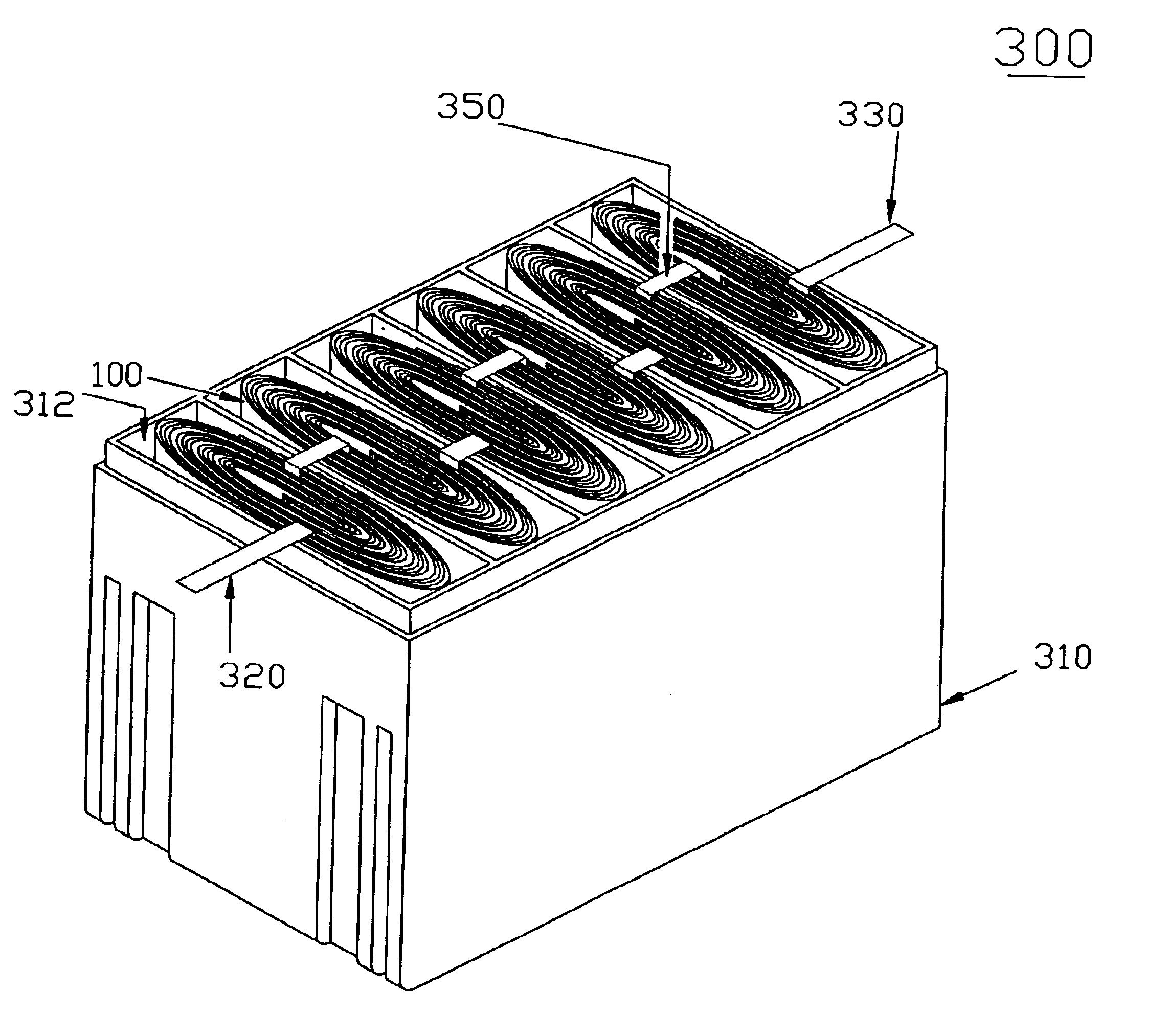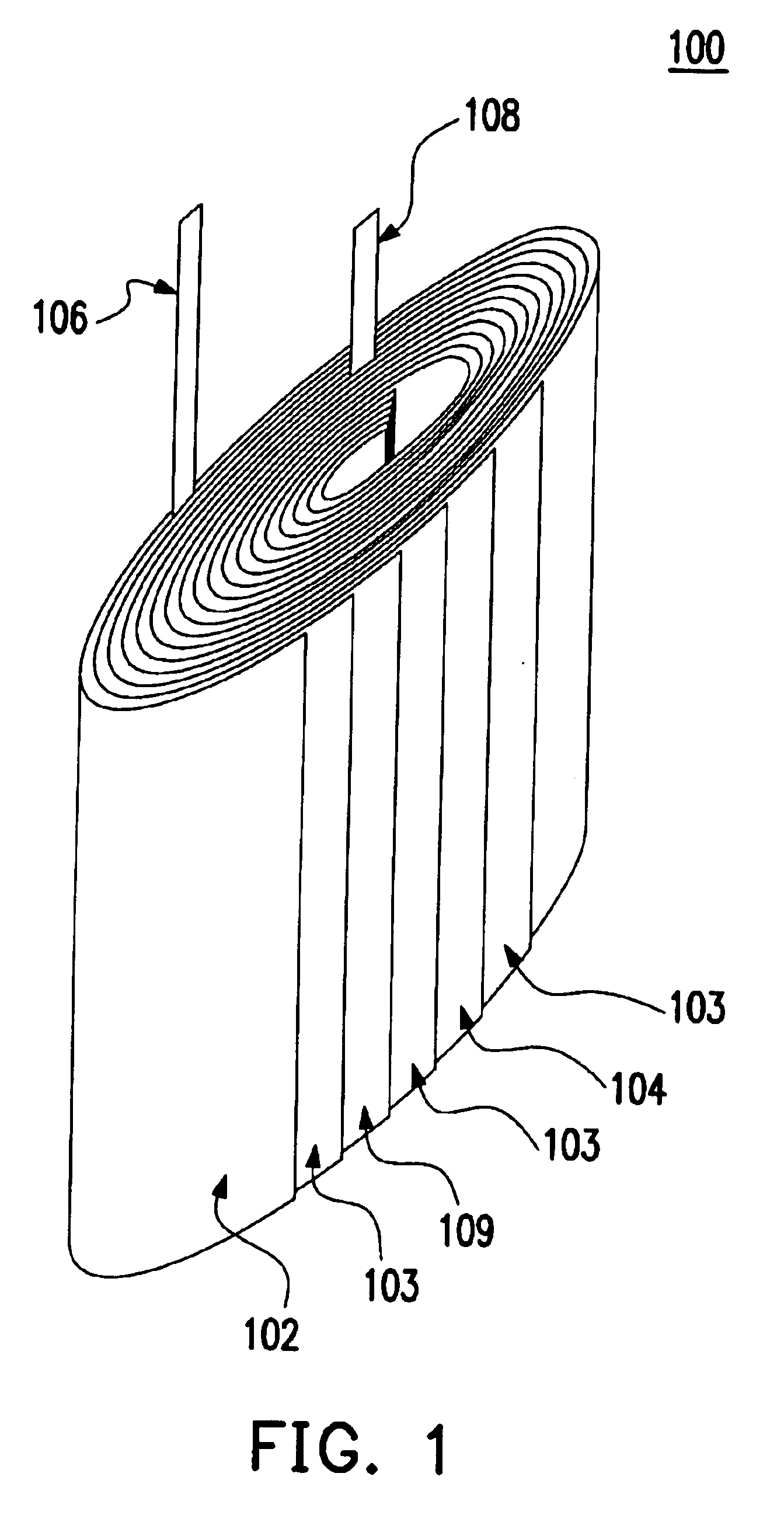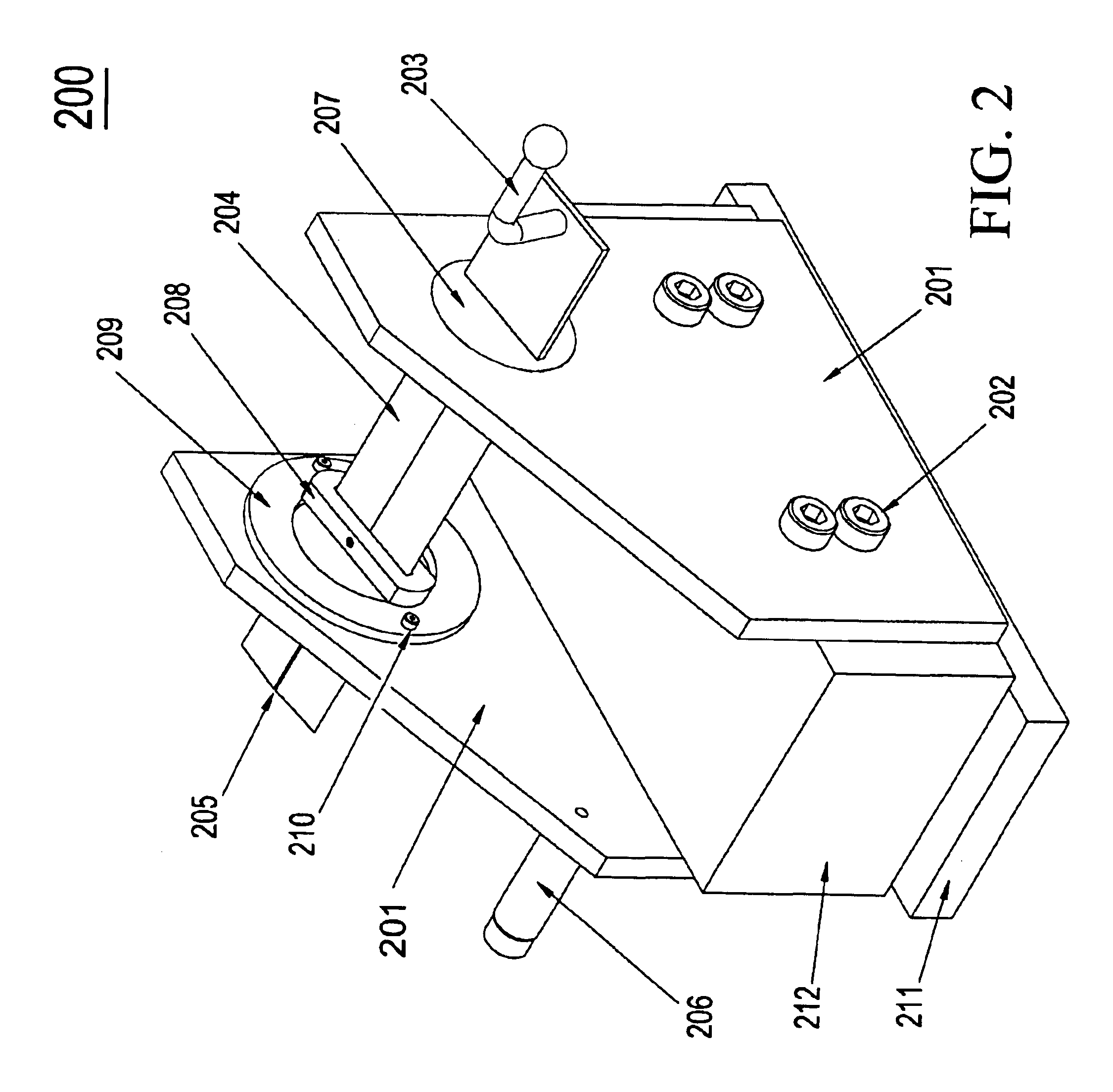Supercapacitor with high energy density
a supercapacitor and energy density technology, applied in the direction of wound capacitors, multiple hybrid/edl capacitors, electrolytic capacitors, etc., can solve the problems of reducing throughput, inherently limited power output of batteries, and inferior power output of batteries to capacitors for the latter, so as to achieve sufficient energy density, reduce cost, and reduce hustle
- Summary
- Abstract
- Description
- Claims
- Application Information
AI Technical Summary
Benefits of technology
Problems solved by technology
Method used
Image
Examples
Embodiment Construction
Six elongated square rolls are prepared on the manual winder as shown in FIG. 2. A six-cell lead-acid case that has a length of 11 cm, width of 6.6 cm, height of 8.5 cm, and each compartment of 1.6.times.6.3.times.7 cm is used to house the capacitor rolls. Every capacitor roll is comprised of 2 electrodes and 2 separators at a size to snugly fit the compartment. After the capacitor rolls are impregnated with 1M (C.sub.2 H.sub.5).sub.4 NBF.sub.4 / PC, the rolls are serially connected and encapsulated to form a supercapacitor of 15V.times.32F as indicated in FIG. 4. Though the supercapacitor is primitively fabricated through manual operation, it yields nice discharge curves at four different discharge rates as shown in FIG. 5. At a total weight of 550 g and a measured peak current of 170A, the supercapacitor as fabricated has an experimental power density of 4.6 KW / Kg that is sufficient for many applications including jump start of automobiles.
It will be apparent to those skilled in th...
PUM
 Login to View More
Login to View More Abstract
Description
Claims
Application Information
 Login to View More
Login to View More - R&D
- Intellectual Property
- Life Sciences
- Materials
- Tech Scout
- Unparalleled Data Quality
- Higher Quality Content
- 60% Fewer Hallucinations
Browse by: Latest US Patents, China's latest patents, Technical Efficacy Thesaurus, Application Domain, Technology Topic, Popular Technical Reports.
© 2025 PatSnap. All rights reserved.Legal|Privacy policy|Modern Slavery Act Transparency Statement|Sitemap|About US| Contact US: help@patsnap.com



